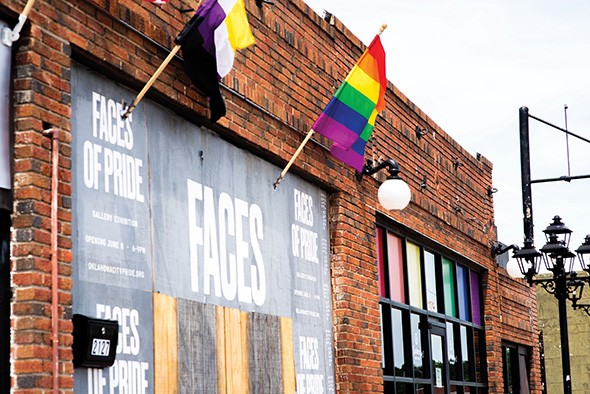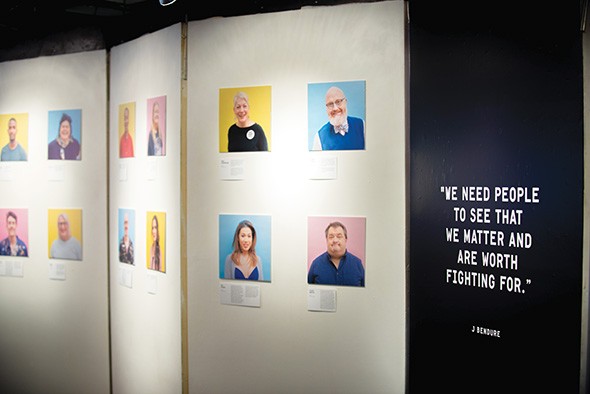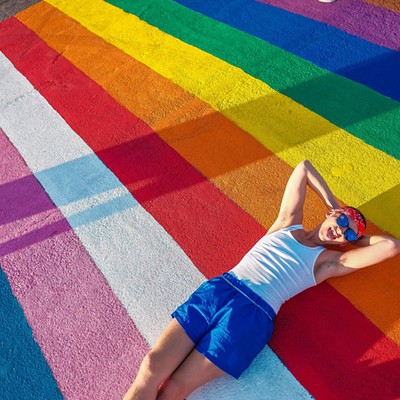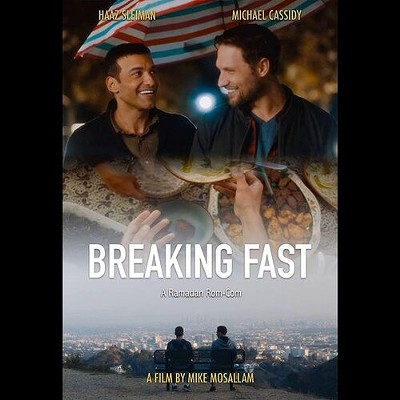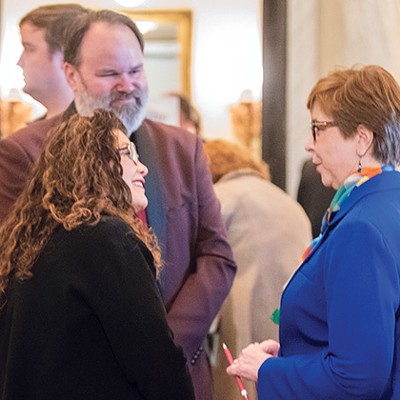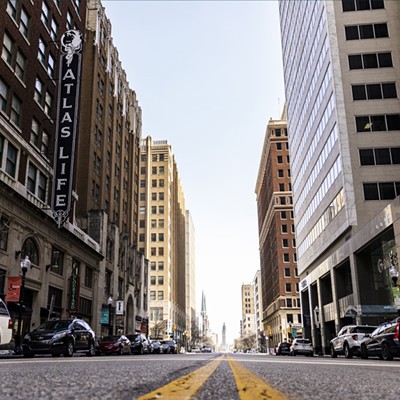Faces of Pride
noon-8 p.m. Monday-Saturday through June 29
Wreck Room
2127 NW 39th St.
oklahomacitypride.org
Free
Deconstructed: Conversations with a Drag Artist
6 p.m. Wednesday
Wreck Room
2127 NW 39th St.
oklahomacitypride.org
Free
Looking at Faces of Pride, viewers might better see another person, or they might see a reflection of themselves. Either way, said Oklahoma City Pride event director Lauren Zuniga, viewers are in for a “powerful experience” whether “they connect with it, they’ve experienced something similar, or they’ve never experienced anything like that and they had no idea what it was like.”
On view through June 29 at Wreck Room, 2127 NW 39th St., Faces of Pride pop-up gallery features portraits of members of the Oklahoma LGBTQ+ community alongside quotes taken from interviews about their experiences. Zuniga said the idea for the exhibit came from a discussion about what “Oklahoma Pride should feel like” that included descriptors “meaningful,” “fun,” “energetic” and “cheerful” but also “serious and with an awareness of the issues at hand for the LGBTQ community.”
All of these ideas and more are conveyed by members of the community sharing their stories in interviews posted on the Oklahoma City Pride website. For example, Kendra Clements — president and founder of business consulting firm We the People and co-founder of nonprofit Matriarch, which offers resources for indigenous women — talks about being asked to leave home at the age of 17 after her family discovered she was a lesbian and the excitement that she felt at the age of 24 watching Ellen DeGeneres come out on her self-titled sitcom.
“I was bellied up to the bar on a weeknight with 50 of my closest lesbian friends,” Clements said in her Faces of Pride interview. “We showed up that night specifically to watch this historical moment. We cried, cheered, drank, raised shot glasses and toasted her bravery. It’s almost as if she gave our community ‘permission’ to be who we were born to be.”
Allie Shinn, executive director of LGBTQ+ rights advocacy organization Freedom Oklahoma, describes the difficulties LGBTQ+ Oklahomans deal with in her Faces of Pride interview.
“In Oklahoma, discrimination is the rule, not the exception,” Shinn said in the interview. “We don’t have to look into our classrooms to find bullying. Our government bullies us. Our government discriminates against us.”
Ward 2 city councilperson James Cooper, in his Faces of Pride interview, expresses similar thoughts.
“In 1971, being LGBTQ was illegal in every state except Illinois,” he said in his interview. “When I saw my first queer characters in 1996’s The Birdcage, it was still illegal in Oklahoma to be gay. … In 2003, our Supreme Court ruled it unconstitutional to have laws saying it was illegal to be gay. This history is one of discrimination. … Too many states allow employers to fire LGBTQ folk for no other reason than their sexual orientation and allow landlords to evict LGBTQ folk, too. Unfortunately, Oklahoma is one of those states.”
Hannah Royce, social media coordinator at Downtown Oklahoma City Partnership and founder of Confidence Con, meanwhile, uses a few additional adjectives to describe Pride in her interview.
“Pride is sacred,” she said in the interview. “It’s holy. … Pride means intentionally being who you are. Pride means support from the family you’ve never even met. Pride is a symbol of self-love, and it’s a symbol of gratitude for the past, present and future generations of queer people(s).”
Zuniga said Wreck Room is the perfect place for the Faces of Pride exhibition and Pride HQ because it, too, is something of a sacred space for many LGBTQ+ people who grew up in Oklahoma City in the ’90s and early 2000s.
“We joke that so many of us have made out on the steps at the Wreck Room because it was an all-ages and after-hours club,” Zuniga said. “After the bar closed, it would be, like, popping with a DJ and stuff like that. It could also be kind of seedy; I won’t lie ... but it was still just almost an iconic place. I have some friends that are married that met there, so it has a really special place in their heart, and for a lot of us, it was the first time that we could be queer in public or we could be gay in public. We could be in that place as a teenager, and I could kiss another girl and no one would even bat an eye. … They reopened a few years ago, and a whole new generation of baby drag queens were able to get their start there. The young performers created a whole dressing room behind the stage, this whole makeup and costume area behind the stage just with what they had. That building is really old and not well taken care of, and so when I look at it, it makes me want to cry to think about all these young, up-and-coming drag performers finding themselves at the Wreck Room.”
The venue closed again last year but will be open during Pride as a space for youth and the official Pride HQ, and Zuniga said Oklahoma City Pride is planning to use it as a community event space and art gallery throughout the year. During Pride, Zuniga said a collection of OKC Pride T-shirts from the ’80s and ’90s will be on display.
Deconstructed: Conversations with a Drag Artist 6 p.m. Wednesday at the Wreck Room features a discussion with drag artists about the art of a drag performance from makeup and costumes to the stage show itself.
Behind Wreck Room, another OKC tradition, Glitter Alley, will also be revived. Zuniga said the tradition, which she read about in old issues of The Gayly, goes back to at least the 1980s when the much smaller Pride festivities included “basically a bunch of kegs and some hot dogs … in this little alley.”
Though Floyd Martin Jr. said he never heard it called Glitter Alley, he remembers going to a block party behind Wreck Room “in the gravel and the grit, in the searing Oklahoma heat” on Father’s Day from about 1983 to 2003.
“Scott Wilson and Donny Hill owned the bars on the block and Larry Crosby owned Tramps, and they gave us all the free beer we could drink, and free hot dogs and hamburgers,” Martin wrote in a Facebook message. “Someone brought a karaoke truck and a dunk tank, and we partied our little LGBT Gaybie asses off. It was so fun, so gay and I look back on that with so many happy memories.”
Though this year’s Pride will doubtlessly be chronicled in countless photos on Instagram and Facebook, Martin said not many photos exist of Pride’s early days.
“Being photographed at a gay event could be career-ending for a lot of people, so we frowned on it,” Martin wrote. “That being the case, there are not a lot of pics from back then.”
This year, Glitter Alley is a party place for youth with snowcones, cotton candy, music and, of course, glitter. During the festivities on Saturday, the alley will be home to art vendors. The alley’s offerings have expanded from the early days of hot dogs and kegs, and Zuniga said even the decorations have been upgraded for modern considerations.
“It’s biodegradable glitter,” Zuniga said, “so don’t get stressed.”
Visit oklahomacitypride.org.

